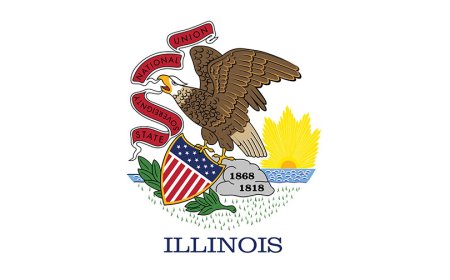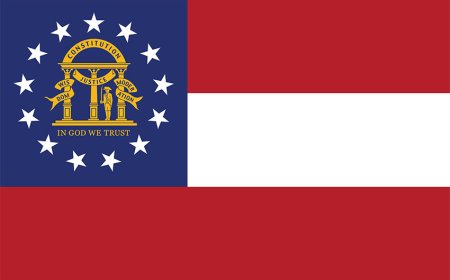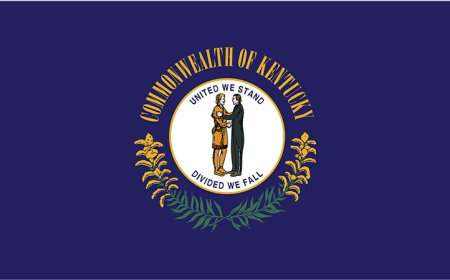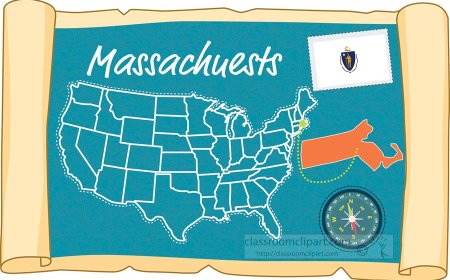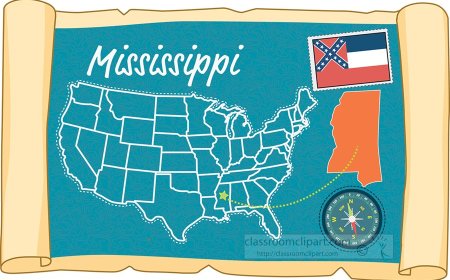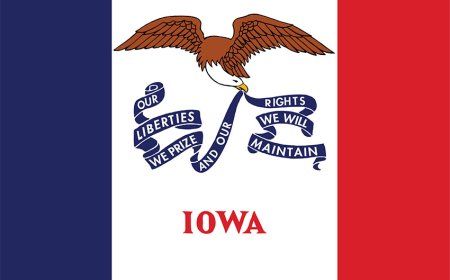Arizona State Encyclopedia Article Facts History and Quiz
Discover Arizona’s geography history landmarks culture and test your knowledge with our encyclopedia article on the Grand Canyon State.

Introduction
Arizona, nicknamed the Grand Canyon State, lies in the southwestern United States. Renowned for its dramatic desert landscapes, red-rock formations, and the vast Colorado Plateau, Arizona’s terrain ranges from saguaros in the Sonoran Desert to snow-capped peaks in the north. Home to Indigenous cultures for millennia and shaped by Spanish, Mexican, and American influences, Arizona blends historic traditions with modern urban growth.
Quick Fact Box
- Statehood: February 14, 1912 (48th state)
- Capital & Largest City: Phoenix
- Nickname: The Grand Canyon State
- Motto: Ditat Deus (God Enriches)
- Area: 113,990 mi² (6th largest)
- Population: ~7.3 million (2020 census)
- Highest Point: Humphreys Peak (12,637 ft)
- Lowest Point: Colorado River at Lake Mead (70 ft)
- State Bird: Cactus Wren
- State Flower: Saguaro Cactus Blossom
- State Tree: Palo Verde
Where in the USA
Arizona occupies the Four Corners region of the American Southwest, bordered by California and Nevada to the west, Utah to the north, New Mexico to the east, and Mexico to the south. Its geography includes the low-elevation Sonoran Desert, the Mogollon Rim highland, and plateaus carved by the Colorado River, creating the Grand Canyon—a UNESCO World Heritage site.
Landmarks and Attractions
The Grand Canyon, carved over millions of years by the Colorado River, offers breathtaking vistas and hiking trails like Bright Angel and South Kaibab. Sedona’s red-rock buttes and vortex sites draw spiritual seekers and outdoor enthusiasts. Monument Valley’s sandstone mesas, on Navajo Nation land, showcase iconic Western scenery. Petrified Forest National Park preserves ancient fossilized trees, and the historic mining town of Jerome perches dramatically on Cleopatra Hill.
State Symbols & Emblems
The saguaro cactus blossom—a white, night-blooming flower—symbolizes Arizona’s desert beauty. The cactus wren, the state bird, nests among spiky cacti for protection. Palo verde trees, with green bark and yellow blooms, demonstrate desert adaptation by carrying out photosynthesis in their trunks. Arizona’s flag features a copper star over radiating red and yellow rays, representing its copper mining heritage and western sunsets.
People, Culture & Economy
Arizona’s population blends Native American tribes (such as the Navajo, Hopi, and Apache), Hispanic communities, and newcomers drawn to its climate and economy. Phoenix and Tucson serve as cultural hubs with museums like the Heard Museum and the Arizona-Sonora Desert Museum. Key industries include aerospace and defense, semiconductor manufacturing in the “Silicon Desert,” tourism centered on national parks, and agriculture—especially cotton, lettuce, and citrus.
Famous People from the State
- Barry Goldwater: Five-term U.S. Senator and 1964 presidential candidate
- Sandra Day O’Connor: First female U.S. Supreme Court Justice
- Jordin Sparks: Singer-songwriter and winner of American Idol Season 6
- Aaron Rodgers: NFL quarterback and Super Bowl MVP (born in Chico but raised in Phoenix)
- Lynda Carter: Actress best known for Wonder Woman (born in Phoenix)
- Geronimo: Apache leader renowned for resistance against U.S. and Mexican forces
- Stevie Nicks: Vocalist of Fleetwood Mac, born in Phoenix area
Climate, Ecosystems & Conservation
Much of Arizona experiences a hot desert climate with summer highs exceeding 110 °F. The northern plateau receives snow, supporting ponderosa pine forests and elk. Monsoon season (July–September) brings thunderstorms that replenish dry washes. Conservation efforts focus on water management in the Colorado River Basin, protection of endangered species like the Sonoran pronghorn, and preserving riparian corridors along the Salt and Verde Rivers.
Government, Education & Everyday Life
Arizona’s government comprises a governor and bicameral legislature in Phoenix. It hosts universities such as Arizona State University in Tempe and the University of Arizona in Tucson, noted for space sciences and optical research. Everyday life can include morning hikes up Camelback Mountain, weekend drives through Red Rock Country, attending spring training baseball games, or sampling Sonoran-style Mexican cuisine with flour-wrapped tacos.
Fun Facts
- The Grand Canyon is over 270 miles long and over a mile deep.
- Arizona does not observe daylight saving time (except on the Navajo Nation).
- Meteor Crater near Winslow is one of the best-preserved meteorite impact sites on Earth.
- Saguaro cacti can live over 150 years and grow arms only after 75 years.
- Route 66 runs through towns like Kingman and Seligman, preserving Americana heritage.
Vocabulary Words
- Plateau: A high, flat region such as the Colorado Plateau in northern Arizona.
- Monsoon: A seasonal wind bringing heavy rains, especially during the Southwest’s summer.
- Riparian: Relating to the interface between land and a river or stream, important for wildlife.
- Biodiversity: The variety of plant and animal life, high in ecosystems like the Sky Islands.
- Adobe: Sun-dried brick made of earth and organic materials, used in historic Southwestern architecture.


















































